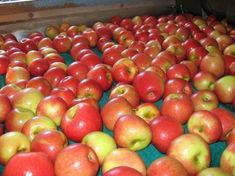
Commonwealth ties have helped ensure the trade in apples with New Zealand has stayed strong as producers and exporters on the opposite side to the globe as the UK get set to celebrate the Diamond Jubilee.
First exports of apples to the UK date back to the late 1920s, and were conducted under the Export Control Board, which was the precursor to the Apple and Pear Marketing Board, established in 1948.
New Zealand sendings hit one million boxes to the UK for the first time in 1949 and the main varieties were Cox, Kidd’s Orange (a Cox cross developed by Kiwi grower James Hutton Kidd), Sturmer Pippin and cooking apple Ballarat.
The variety mix started to change in the late 1940s and early 1950s when a young princess - who later became Queen Elizabeth II - probably enjoyed her first Granny Smith, Red Delicious and Golden Delicious from New Zealand.
Thanks to historic and Commonwealth ties, the UK dominated sendings to Europe in the 1950s. The Continent did not really open up until the 1970s and the advent of the European Economic Community. This was also the time when the Apple & Pear Board began supplying fruit to a select number of panellists on wholesale markets around the UK. It was a system that did not really change until the 1990s.
Nowadays, there is much talk of New Zealand having its sights trained on the Asian markets, but this is often over-egged. Peter Beaven of industry body Pipfruit NZ says: “Despite the fact there has been a significant shift for the whole of southern hemisphere apple supplies towards Asia, still more than 50 per cent of New Zealand apple exports go to the UK and the rest of Europe. Obviously there is a shift over time because of the growth opportunity Asia represents with a growing population and growing acquisitive power of the middle classes, but the EU, including the UK, are still seen by our industry as critical markets.”
What has changed, of course, are the varieties that are being supplied. In 2005, Braeburn from New Zealand peaked at eight million export cartons. This season that figure has fallen to three million. The shift is towards more acid-balanced varieties such as Pink Lady and Jazz.
New Zealand remains one of the best countries in the world for apple production as its consistently high rankings in the World Apple Report, published by Belrose Inc, indicate each year, according to Beavan. “It has a lot to do with our growing systems and that we can produce with very low residue levels,” he says. “Some 10 per cent of our crop is organic and Europe is the most significant market for organic apples in the world.”
Currency issues have tested the distant supplier for several seasons in a row and mean that New Zealand has to be at the premium end of the market in order to survive. “It is not easy, especially over the last three to four years, but our industry has survived currency and other issues before,” he concludes. -



